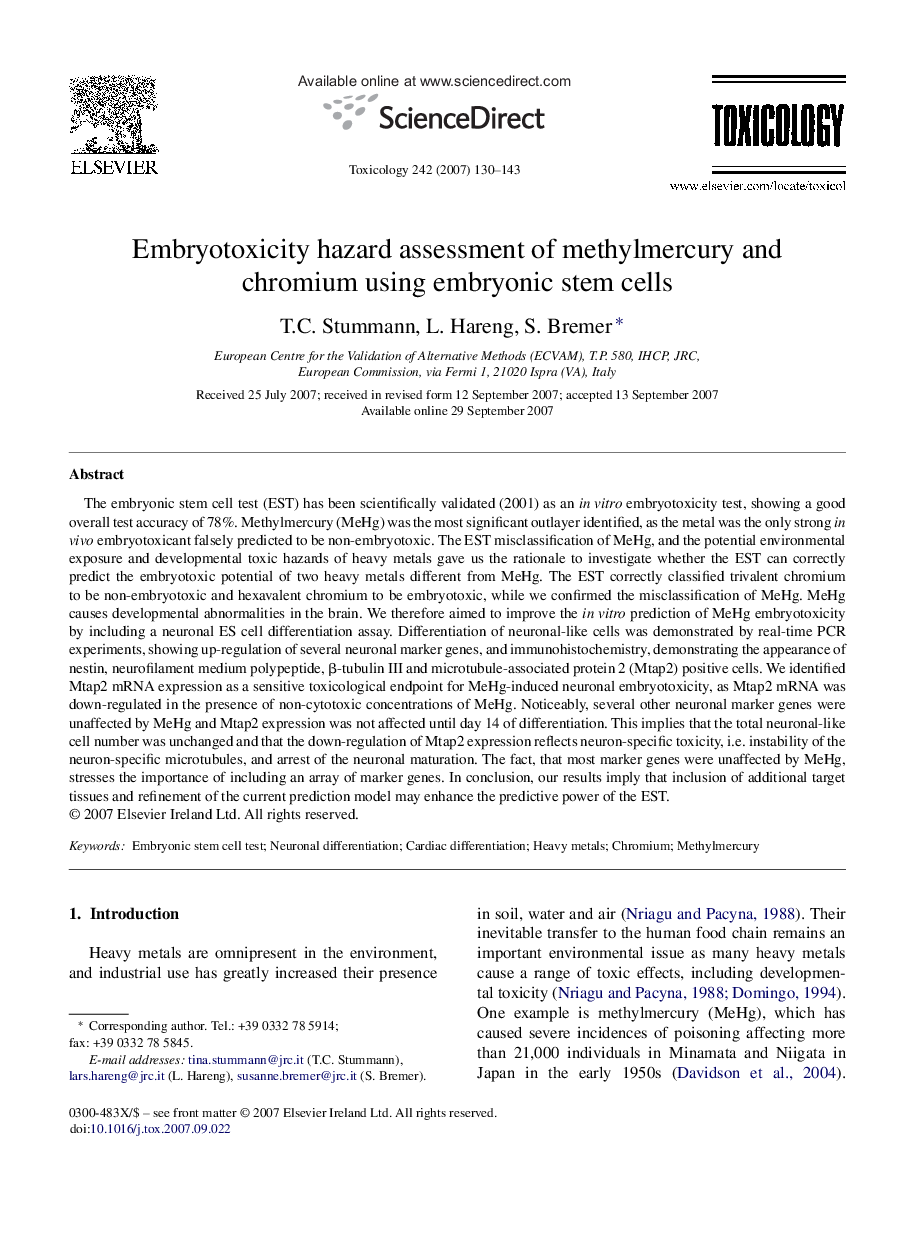| کد مقاله | کد نشریه | سال انتشار | مقاله انگلیسی | نسخه تمام متن |
|---|---|---|---|---|
| 2597142 | 1562413 | 2007 | 14 صفحه PDF | دانلود رایگان |

The embryonic stem cell test (EST) has been scientifically validated (2001) as an in vitro embryotoxicity test, showing a good overall test accuracy of 78%. Methylmercury (MeHg) was the most significant outlayer identified, as the metal was the only strong in vivo embryotoxicant falsely predicted to be non-embryotoxic. The EST misclassification of MeHg, and the potential environmental exposure and developmental toxic hazards of heavy metals gave us the rationale to investigate whether the EST can correctly predict the embryotoxic potential of two heavy metals different from MeHg. The EST correctly classified trivalent chromium to be non-embryotoxic and hexavalent chromium to be embryotoxic, while we confirmed the misclassification of MeHg. MeHg causes developmental abnormalities in the brain. We therefore aimed to improve the in vitro prediction of MeHg embryotoxicity by including a neuronal ES cell differentiation assay. Differentiation of neuronal-like cells was demonstrated by real-time PCR experiments, showing up-regulation of several neuronal marker genes, and immunohistochemistry, demonstrating the appearance of nestin, neurofilament medium polypeptide, β-tubulin III and microtubule-associated protein 2 (Mtap2) positive cells. We identified Mtap2 mRNA expression as a sensitive toxicological endpoint for MeHg-induced neuronal embryotoxicity, as Mtap2 mRNA was down-regulated in the presence of non-cytotoxic concentrations of MeHg. Noticeably, several other neuronal marker genes were unaffected by MeHg and Mtap2 expression was not affected until day 14 of differentiation. This implies that the total neuronal-like cell number was unchanged and that the down-regulation of Mtap2 expression reflects neuron-specific toxicity, i.e. instability of the neuron-specific microtubules, and arrest of the neuronal maturation. The fact, that most marker genes were unaffected by MeHg, stresses the importance of including an array of marker genes. In conclusion, our results imply that inclusion of additional target tissues and refinement of the current prediction model may enhance the predictive power of the EST.
Journal: Toxicology - Volume 242, Issues 1–3, 5 December 2007, Pages 130–143